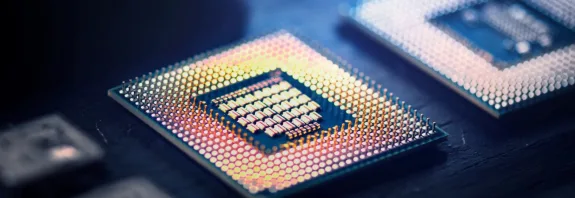How 5G Works

How 5G Works: The Technology of the Next Generation
In this article, we’ll explore How 5G Works, the principles behind it, and how it differs from previous generations. 5G, the fifth generation of mobile networks, promises revolutionary changes in Internet speed, connection latency, and the ability to connect a vast number of devices simultaneously. This technology is already being rolled out worldwide, laying the groundwork for smart cities, autonomous vehicles, and an advanced Internet of Things (IoT).
What is 5G?
5G is the successor to 4G, designed to increase bandwidth, reduce latency, and provide reliable connectivity under heavy loads. Unlike earlier generations (2G for calls, 3G for mobile Internet, 4G for streaming video), 5G is built to support billions of connected devices—from smartphones to sensors and drones.
Key Features of 5G:
- Speed: Up to 10 Gbps (10–100 times faster than 4G).
- Latency: Less than 1 ms (compared to 20–30 ms in 4G).
- Capacity: Supports up to 1 million devices per square kilometer.
How Does 5G Work?
5G’s functionality relies on several key technologies and principles that enable its impressive performance.
1. New Frequency Bands
5G uses a broader range of radio frequencies than previous generations:
- Low Frequencies (Sub-1 GHz): Offer wide coverage and penetration into buildings but deliver lower speeds.
- Mid Frequencies (1–6 GHz): Strike a balance between speed and coverage, currently the most common 5G range.
- High Frequencies (mmWave, 24–100 GHz): Provide ultra-high speed and capacity but have a short range (up to 500 meters) and struggle to penetrate walls. High-frequency millimeter waves (mmWave) are a major 5G innovation, enabling massive data transfers in seconds.
2. Massive MIMO Antennas
5G employs Massive MIMO (Multiple Input Multiple Output) technology—antennas with dozens or hundreds of transmitters and receivers. This allows simultaneous signal processing for multiple users, boosting efficiency and reducing interference. For example, while 4G towers might have 8 antennas, 5G can have 64 or 128.
3. Beamforming
Instead of broadcasting signals in all directions like 4G, 5G towers use beamforming—directing data to a specific device. This minimizes signal loss and improves connection quality, especially in crowded areas.
4. Small Cell Base Stations
Due to high-frequency waves, 5G requires more base stations (small cells) placed closer together. These compact stations are mounted on poles, buildings, or street fixtures, complementing traditional large towers. This dense network ensures robust urban coverage.
5. Network Virtualization (NFV and SDN)
5G leverages Software-Defined Networking (SDN) and Network Functions Virtualization (NFV). This enables “network slicing”—dividing the network into virtual segments optimized for specific tasks, like one for streaming video and another for autonomous vehicles with ultra-low latency.
6. NR (New Radio) Protocol
5G uses a new radio access standard, 5G NR (New Radio), replacing LTE. It’s designed to operate across various frequencies and offers flexibility in resource allocation among users.
Stages of Data Transmission in 5G
- Device Request: A smartphone or gadget sends a signal to the nearest base station.
- Signal Processing: The station directs a beam to the device using beamforming and transmits data via Massive MIMO antennas.
- Core Connection: The base station connects to the fiber-optic core network, which relays data to the Internet or another user.
- Data Reception: The device receives the response with millisecond latency.
Advantages of 5G
- High Speed: Perfect for 4K video, VR, and online gaming.
- Minimal Latency: Critical for autonomous transport and remote surgery.
- Scalability: Connects vast numbers of IoT devices (smart homes, sensors).
- Energy Efficiency: Optimized power consumption for devices.
Disadvantages and Challenges
- Limited Coverage: High frequencies struggle with obstacles, requiring more stations.
- Cost: Deploying infrastructure costs billions of dollars.
- Compatibility: Not all older devices support 5G.
Use Case Examples
- Smart Cities: Managing traffic lights and real-time video surveillance.
- Internet of Things: Billions of sensors for weather, health, and transport monitoring.
- Industry: Factory automation with precise robot control.
Conclusion
How 5G Works? 5G operates through a combination of new frequencies, advanced antennas, software-defined management, and a dense network of base stations. This technology doesn’t just speed up the Internet—it builds the foundation for a future where everything, from cars to household appliances, is part of a connected ecosystem. Despite its challenges, 5G is already transforming our lives, ushering in an era of ultra-fast and ultra-reliable connectivity. If your country hasn’t adopted 5G yet, just wait—it’s only a matter of time!









